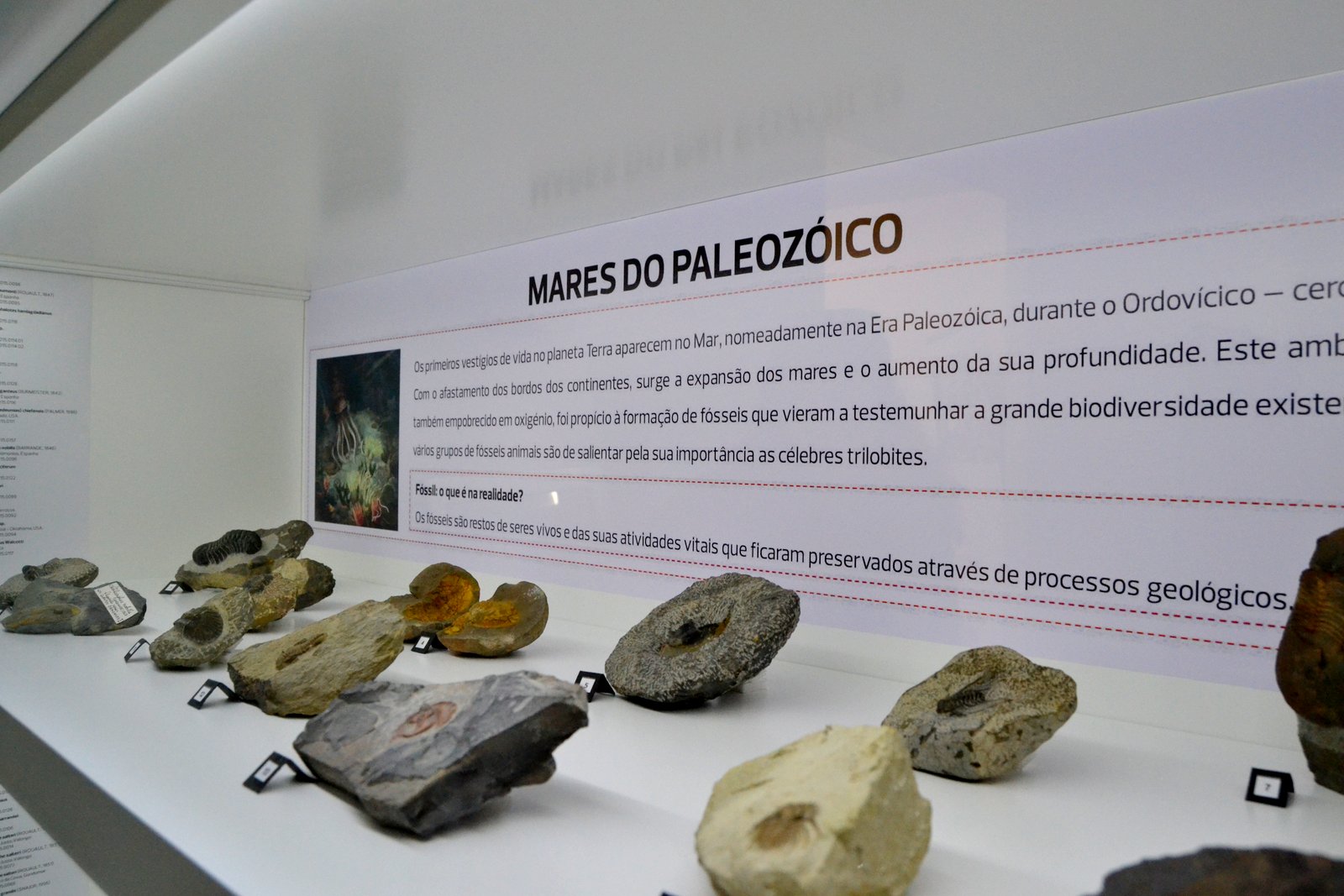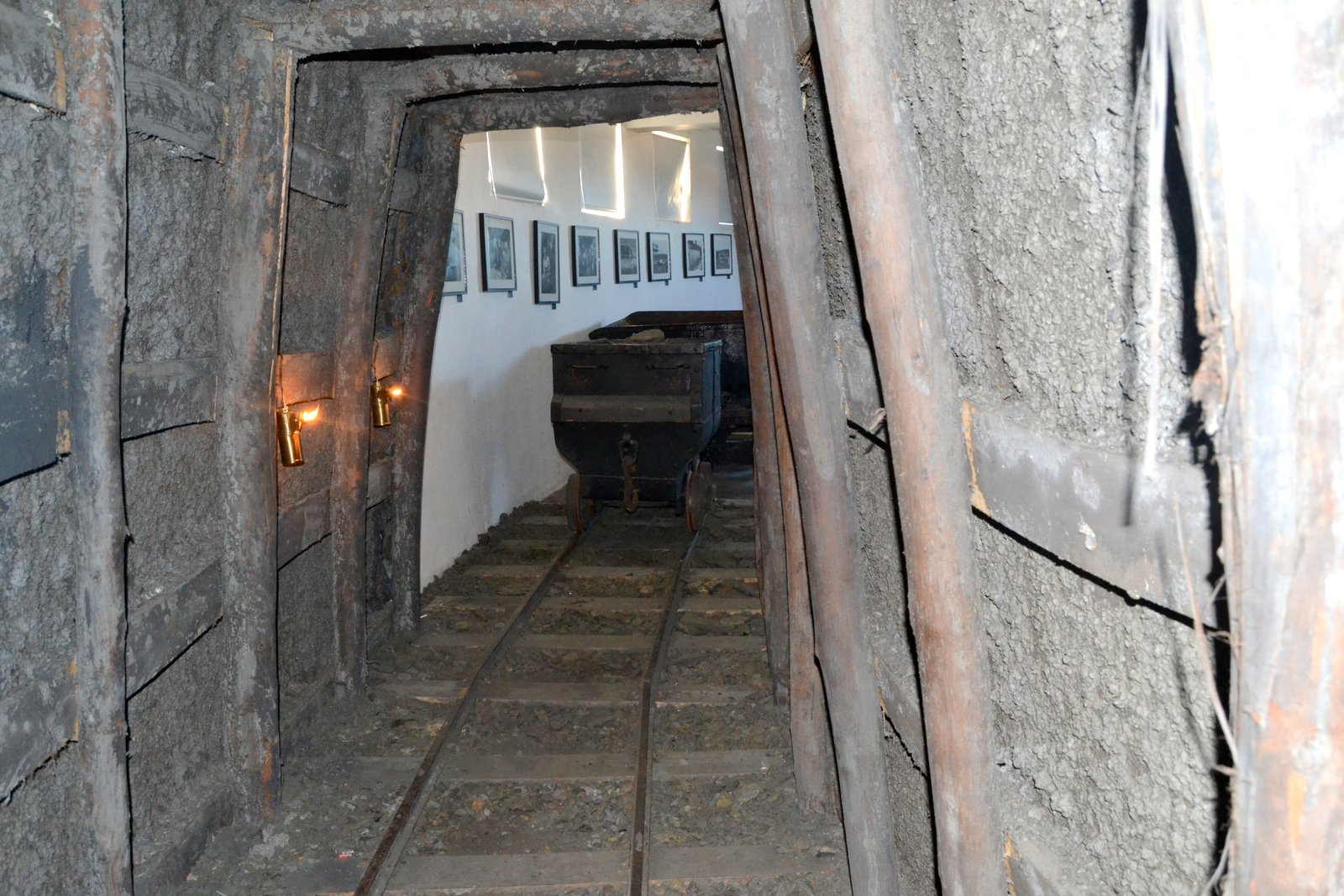Museu Mineiro de São Pedro da Cova, Gondomar
Created in 1989 , the Mining Museum of São Pedro da Cova has as its mission the enhancement , promotion and dissemination of geological and mining of São Pedro da Cova . Housed in the old Houses of Malta is acquired by the Parish of São Pedro da Cova in the 80s of last century , it opened in 1989 ( project architect António Madureira ) and Mining Museum , acquiring new functionality as a center of mining memories . Initially formed a center attractive to local and national community , over time was decreasing its ability to attract the public . In 2008 a plan is applied to dynamic space that began with the cataloging and inventory of objects and the reorganization of the permanent exhibition , continuing through the completion of various events : temporary exhibitions , workshops , trainings , seminars and lectures , concerts , among other . It is with this new dynamic , and the positive response from the public, that the Parish Council moves forward with a project to restructure the building to adapt it to the needs of the museum. Project prepared by the League of Friends of the Museum Miner identified needs and put forward a proposal for rehabilitation of the building and the museum content now underway .
CHARACTERISTICS
City: Gondomar
Postal Code: 4510 - 457
Telephone: 935663998
Email: casamalta.museumineiro@hotmail.com
Website: http://museumineiro.pt.vu/
tuesday, wednesday, thursday, friday
From 12:30:00 to -.
From 17:30:00 to -.
Weekend and Holidays Schedule:
From 10:00:00 to 12:30:00.
From 14:00:00 to 17:30:00.
Exceptions:
Closed on Sundays, Mondays and Public Holidays
Paid Entry:
0€
Discount Policy:
Admission free of charge
Specific Conditions:
Individual guided tours do not require advance scheduling.
Method:
-
Difficulty Level:
Low
Group Visits:
No
Guided Tours:
No
Observations:
For all types of audiences.
After the closure of the Company Coal Mine of San Pedro da Cova, population orchestrated actions that provided the collection of objects and documentation industrial mining. It is with this collection to the Parish of São Pedro da Cova, after buying one of the old houses malta, inaugurates the Mining Museum dedicated to issues industrial, mining and geological. The Museum's collection Miner São Pedro da Cova blending artefacts used in the dismantling, processing and shipping of coal, fossil plants and animals that represent the evolutionary period of the Earth sample of coal, and the business of the Company file Coal Mine St. Pedro da Cova, maps, plans and books. In recent years the Museum's collection has been enriched with intangible heritage through the collection of oral testimonies of former miners.
Activity Program:
The program implemented by the educational service of the Museum aims to raise public awareness on issues of identity mining and defense industrial heritage and geology. For this purpose, available to the general public several exploration historical, territorial, environmental and cultural.
Study and Research Unit:
-
Audiovisual and Multimedia Resources:
museumineirosaopedrodacova.blogspot.com
Volunteering Programs:
-
The program implemented by the educational service of the Museum aims to raise public awareness on issues of identity mining and defense industrial heritage and geology. For this purpose, available to the general public several exploration historical, territorial, environmental and cultural.
Target Audience:
4 to 70 years.
Activity Cost:
0€
Weekly Schedule:
tuesday, wednesday, thursday, friday
From 10:00:00 to 12:00:00.
From 13:30:00 to 17:30:00.
Weekend and Holidays Schedule:
saturday
From 10:00:00 to 12:00:00.
From 13:30:00 to 17:30:00.
Exceptions:
Closed on Sundays, Mondays and Public Holidays
Observations:
Appointment to carry out the activities. See activities http://museumineiro.pt.vu/
T. Rodoviário
Agency Name:
S.T.C.P.
Telephone Number:
225071000
Type of Transport:
Táxi
Agency Name:
Rádio Táxi Progresso
Telephone Number:
22 463 53 18
Parking for private vehicles:
Yes
Archaeological heritage related to the activity of coal mining, comprised of a group of buildings, such as: Washing Area, Tower Yarder and Overhead Cables, Warehouse, Office, Machine Room and Extraction Tower (cavalete) among others. The Cavalete do Poço de Sao Vicente (main well) is one of the most notable items on the Compound. It is a notable example of industrial construction of reinforced concrete, which dates back to 1935. It measures 38.50m, approximately the size of a 12/13 story building.
gps: 41.15541 -8.50368
distance: 1km
Situated in the Oporto Metropolitan Area, municipalities of Gondomar, Paredes and Valongo have a wide and relevant geological and mining heritage which manifests itself in terms of stratigraphy, paleontology, tectonics, geomorphology and mineral resources, with special emphasis on the fossil-bearing deposits, auriferous and coal mineralization’s, and the slate deposits from the Paleozoic Era.
Granite rock intrudes schist from the Metamorphic Complex of Foz do Douro, in the north. To the south are leucrocratic augen gneisses. Explanatory display panel.
The municipality of Paredes in partnership with the Department of Geosciences of FCUP have worked in the preservation and promotion of the the Gold Mines of Castromil. This work received an Honorable Mention in the Geoconservation Award, 20 ...
In Paredes, the Castromil and Banjas areas shows important vestiges of the auriferous exploitations of Romans times. This region belongs to the northwest Iberian Peninsula that has been considered one of the richest and most gold produced ...
The Ecological Corridor is essentially a pedestrian trail along the important fluvial systems within the landscape. A large portion of this trail "is built in land with lithology from the Precambrian and/or Cambrian and/or Ordovician period ...
The Environmental Interpretation Centre - CIA, is a space for reception of visitors, for the dissemination and promotion from the Área de Paisagem Protegida Local (Local Protected Landscape Area) of the Serras de Santa Justa e Pias (Santa J ...
Observation of augen gneiss and granite intruded schist or metasediments. Explanatory display panel.
Amphibolites which resulted from the metamorphous of basalt close to one billion years ago can be observed. Explanatory display panel.
Observation of igneous breccia outcroppings generated during the intrusion of a granite vein in the older rocks. Explanatory display panel.
The Foz do Douro Geological Trail Interpretive Centre opened on November 27, 2008 and provides a space for the realisation of activities to supplement field trips to the outdoor trail.
Within FEUP’s (Faculty of Engineering of the University of Porto) Library and Information Services, the Museum Unity is responsible for the management of the museum collections of the Faculty. Based on a polynucleated museum layout model, t ...
The Museum of the Instituto Superior de Engenharia do Porto [Higher Institute of Engineering Museum in Oporto] was created in 1998. This location was created to satisfy a long standing desire to unite and explore a precious collection of sc ...
Pedestrian trail "built in land with lithology from the Precambrian and/or Cambrian Periods and up through the Ordovician Period. In the beginning of this trail, lithology such as schist and siltites from the Ordovician Period is present. A ...
Outcroppings of biotite gneiss and leucocratic gneiss "mixed" with metasediments. Explanatory display panel.
The Stone Museum of Marco de Canaveses is more than what you see. The permanent exhibition is the first step of a project to extend the Museum to other places. In the future it will be a polynuclear museum. Larger, dynamic and innovative. ...
The Museu da Lousa is composed of 3 houses, built with the traditional technique, such as the exterior wall. The first house is intended for carrying out slate workshops. The second house evokes a miner’s house, with a kitchen area, a noctu ...
Route with signaling limitations. It will soon be reformulated and integrated into the Park Network of the Serra das Porto Park. Pedestrian trail "exclusively implemented within land comprised during the Ordovician period. In the beginning ...























